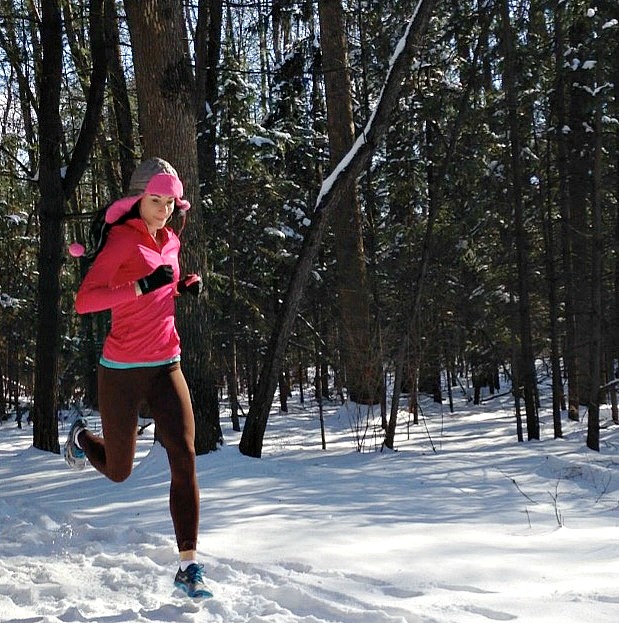When I first started forefoot running, I had intense bottom of heel pain, also known as plantar fasciitis. I thought it was due to learning forefoot running, a running style that involves different foot mechanics than heel strike running. However, during my forefoot running transition, I ran in minimalist shoes. Turns out that my plantar fasciitis was from having a weak arch from wearing cushioned running shoes all my life, and that the pain was not from the mechanics of forefoot running.
Here is why the mechanics of forefoot running may not always cause plantar fascia injury.
Bottom of Heel Pain and Forefoot Running
A new study has found that forefoot running may not cause plantar fasciitis after-all. A study by McDonald et al. 2016 compared the plantar fascia strain values between natural heel strike runners and natural forefoot strike runners and found that both styles of running had strikingly similar plantar fascia strain values throughout most of the stance phase of running.
However, the plantar fascia strain value was different in the natural heel strike runners during the initial contact phase of running in that these runners had a significantly larger plantar fascia strain value as compared with the natural forefoot strike runners. Because plantar fascia strain values were similar during much of the stance phase of running gait, and given that the heel strike runners had a greater plantar fascia strain value, suggests that forefoot runners have no greater risk of plantar fascia injury when compared with heel strike runners.
Many experts believe that because forefoot running results in greater elastic energy storage in the plantar fascia as compared with heel strike running (Pearl et al. 2012), this increases the risk of plantar fascia injury in forefoot runners. However, the lack of research in support of this means that there is an understanding that is too incomplete to assume a forefoot runner is at a greater risk of plantar fascia pain.
The way a forefoot runner has a greater risk of suffering plantar fascia injury is if they run in minimalist footwear after having spent much of their running years wearing thick, cushioned arch supportive running shoes as these shoes create an usually fragile foot arch and plantar fascia (Robbins and Hanna 1987). As soon as you run without external support on your feet, the plantar fascia and arch are unable to yield the normal loading associated with running (Robbins and Hanna 1987). To efficiently build a stronger plantar fascia and foot arch, you need to either run barefoot or in minimalist shoes which improves these structure’s role in acting as a dynamic impact dampening system, which is an adaptation that allows the foot to prevent injury to the rest of the body (Robbins and Hanna 1987).
If you have a plantar fascia injury, there’s a good chance that the injury is not the result of forefoot running, but the leading role for causing this injury is most likely your minimalist footwear. And always remember that plantar fasciitis in this case, is part of the adaptation process of developing a stronger, more resilient foot.
More From Run Forefoot:
Treating Leg Pain with Forefoot Running
The Cause of Toe Joint Pain and Swelling From Running
Benefits of Running Without Shoes
How Coffee Boosts Performance and Health
References:
McDonald et al. The Role of Arch Compression and Metatarsophalangeal Joint Dynamics in Modulating Plantar Fascia Strain in Running. PLOS One, 2016; DOI:10.1371/journal.pone.0152602.
Perl DP, Daoud AI, Lieberman DE. Effects of footwear and strike type on running economy. Medicine & Science in Sports & Exercise. 2012; 44(7):1335 – 43.
Robbins, SE and Hanna, AM. Running related injury prevention through barefoot adaptations. Med Sci Sport Exerc, 1987; 19(2):148-156.
Bretta Riches
BSc Neurobiology; MSc Biomechanics candidate, ultra minimalist runner & founder of RunForefoot. I was a heel striker, always injured. I was inspired by the great Tirunesh Dibaba to try forefoot running. Now, I'm injury free. This is why I launched Run Forefoot, to advocate the health & performance benefits of forefoot running and to raise awareness on the dangers of heel striking, because the world needs to know.
Latest posts by Bretta Riches (see all)
- Does Foot Strike Really Matter in Running? YES! - 17/04/2024
- Heel Lifts Increase Injury in Runners - 16/04/2024
- Are Minimalist Shoes Good for Seniors? YES! - 14/04/2024

